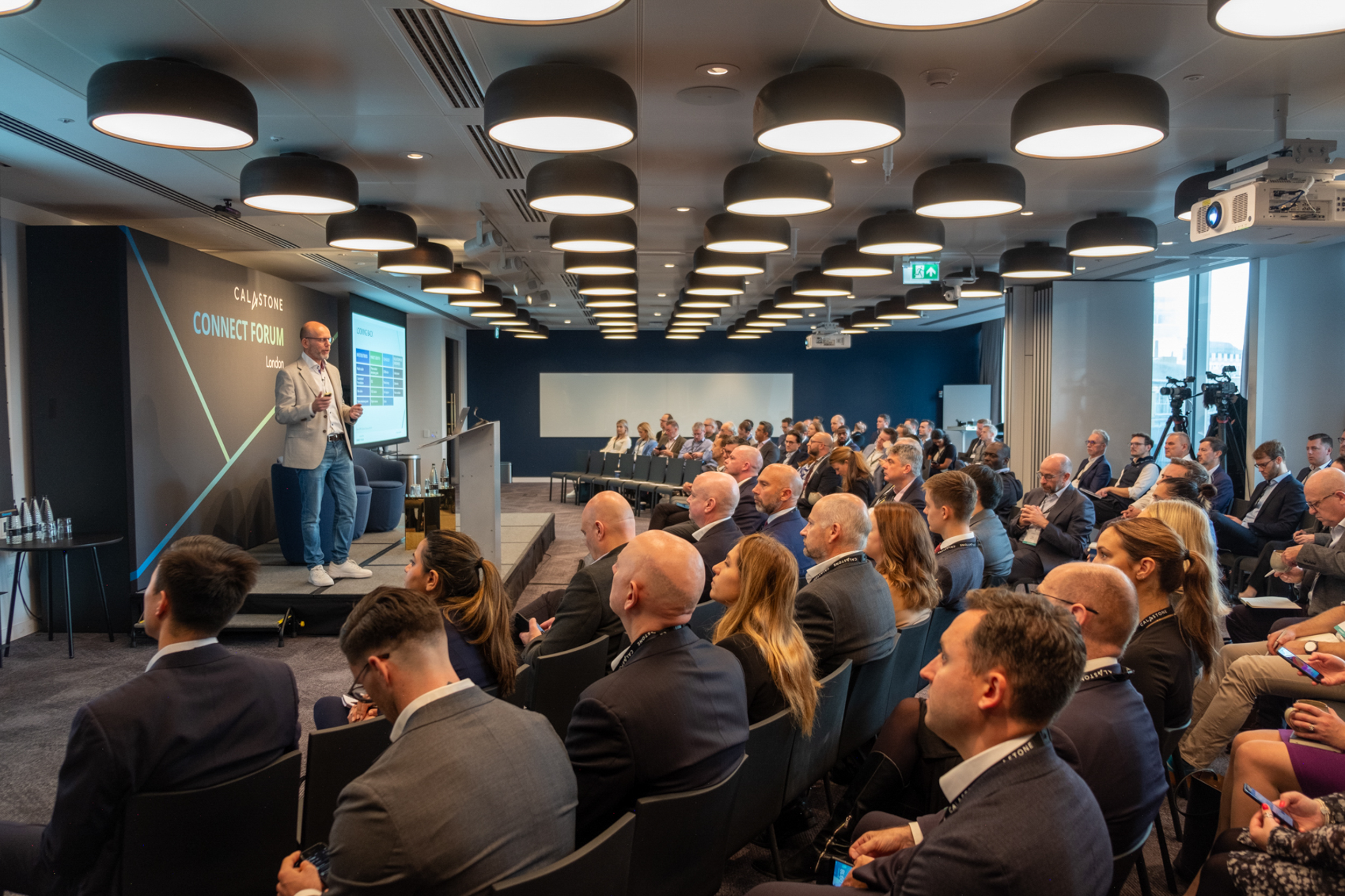Change is a constant in financial services and new technologies are driving change at a faster pace, but the funds sector is still dealing with the past, the present and the future on a daily basis.
There is past performance, which creates reputation and brand, and there is also legacy infrastructure which still dictates so much of business process.
This informs the present, and how we operate and interact with customers today. But at the same time the industry is always looking ahead and shaping a future which responds to new regulations and technologies which are transforming the market for financial services, creating new products and channels for engagement.
Whilst we all agree that the industry is on the cusp of transformation with the right investment in smart and scalable technology, ‘getting the basics right’ today and fixing up the problems of yesterday will underscore how successful we are in this journey.
Applying a past, present and future lens at a time of regime change that favours growth in digital assets and ETFs is forcing the financial services industry to reset its value proposition across all points of the value chain, and fast.
2024 marks the 100th anniversary of the first managed mutual fund in an industry that has grown $A90 trillion[1] in assets under management, and is embarking on a new era of growth through digitalised products and processes. Digital assets are expected to grow to A$24 trillion by 2030[2] (to comprise as much as 10% of global assets) and the ETFs are on track to grow 16% to reach A$27 trillion by 2027[3].
Meanwhile, every year there are over 1.7m events that trigger Australians to seek financial advice, according to a consumer study by NMG. However, professional advice in its current form (and primarily focused on retirement), sees Australians in >90% of these instances, unable to access guidance.
These profound shifts and gaps are posing challenges right across the funds industry value chain that it is transitioning from a fragmented ‘back office’ and ‘middle office’ model towards streamlined processes across all functions.
Calastone continues its mission to support this and solve industry ‘pain points’, recently adding a new solution for the automation of cash settlements in Australia, Calastone Settlements, as an overlay to our order routing solution used in 95% of managed funds wholesale flow.
Settlements completes the Calastone Transaction Services suite and enables users to automate their entire transaction lifecycle, from processing application and redemption orders, automated cash payments associated with those orders, asset transfers, and reporting.
This is another giant step towards realising Calastone’s vision of a friction-free market.
Conflicting pressures can slow down the rate of digital adoption as operational models are pulled in multiple directions to deliver different objectives and comply with ever increasing regulatory requirements.
Many of these issues came to the fore at a Calastone Connect Forum in Sydney last year.
As panellist Stuart Korchinski, Head of Managed Funds Administration (Australia) SS&C said, “dissatisfaction leads to innovation”, acknowledging that there remains a ‘ghastly’ amount of paper in onboarding processes. He pointed out the inherent inefficiencies when you’re dealing with 25 different rules for AML. “You can’t run an industry when you’ve got that kind of discretion and variation, not efficiently.”
Calastone’s Head of Asia, Justin Christopher, told the forum that many industry participants want to move rapidly into more digitisation, including tokenisation, but are waiting for regulation to catch up so they can do more at pace, a shift we are definitely seeing happen in the UK and Singapore.
In these markets we are seeing a constructive balance between entrepreneurial spirit and evolving regulatory frameworks, which reduces the lag between innovation and implementation. While industry consultation around regulating digital assets is underway in Australia, we are behind markets where this has been a dedicated focus involving cross-border collaboration.
So while there was plenty of optimism and excitement in the room about the transformative and likely explosive value to come there was also a sobriety about ‘getting it right’ for customers, whose assets need to be protected today while fund managers focus on building a better, faster tomorrow.
To do that, the industry faces challenges around building scalable and sustainable advice models. The population is ageing and more people need financial advice but the number of financial planners in Australia is falling, so a technology driven solution and business model needs to evolve.
The ageing demographic will also see the superannuation reach a point where outflows to retirees increase significantly and tilt the balance of an industry which, like a vast majority of its customers, has been in the accumulation phase for decades.
Louise Elliott, Principal Consultant at NMG Consulting, told the forum she believed that the superannuation industry has a major opportunity to use the Quality of Advice Review and the Retirement Income Covenant as opportunities to help address Australia’s advice gap. While Louise says regulation is moving in a direction to enable greater customer centricity, she warned that continued industry focus on accumulating assets is likely to hinder the realisation of these opportunities.
Mandy Mannix, Chief Executive, Customer at Challenger, told the panel that while there is clear demand for new and digital products it is important ‘to always start with the customer and keep the things that are fundamentally good, that meet customer needs and demand’ “If you’ve got something that’s structurally sound, you can modernise that to remove friction and delight your customers,” pointing to Challenger’s investment in a new fixed term annuity product which can be purchased online, at any time of the day, in under ten minutes.
Mandy says that today’s clients are more informed than ever and responding to their needs is key. “We’re seeing an increasing demand for alternative strategies, and as Australians live longer and retire in record numbers, we expect to see more market activity aligned to the ‘democratisation’ of alternatives.”
She explained that as the customer user experience continues to transform rapidly, constant improvement and raising the bar will become a ‘hygiene factor’.”
A major takeaway from the forum was the growing acceptance that innovation requires collaboration and partnerships.
As Caroline Higgins, Senior Vice President, Head of Global Fund Services for the Asia Pacific at Northern Trust, one of the world’s leading custodians said, “you can’t do it all”.
“We’ve realised we are not agile enough, nor fast enough to keep up, so we go for more partnerships in areas that are not our expertise, when it comes to new technologies.”
This is a critical trend we are seeing around the world, and one that requires a step-change towards focussing on where and with whom they can create the most value.
Caroline described how clients want Northern Trust to focus on providing solutions to support the evolving investment portfolio needs and looking for all elements of the value chain under the one arrangement. For instance, clients expected Northern Trust to find a solution for the effective custody of digital assets, this was done via finding a technology partner who can bring the right expertise to the table.
Sometimes new technology partners may also partner with competitors and – as Caroline said – “we have to be ok with that.”
As digitisation moves faster, outsourcing is shifting from an off-the-shelf package to solutions which were not just about reducing costs, but helping managers lift their alpha.
As all in the room would have undoubtedly agreed, that is what the industry exists to do.
[1] https://www.icifactbook.org/pdf/2023-factbook.pdf
[2] https://web-assets.bcg.com/1e/a2/5b5f2b7e42dfad2cb3113a291222/on-chain-asset-tokenization.pdf
[3] https://www.pwc.com/gx/en/industries/financial-services/publications/future-of-etf-2027-survey.html




















